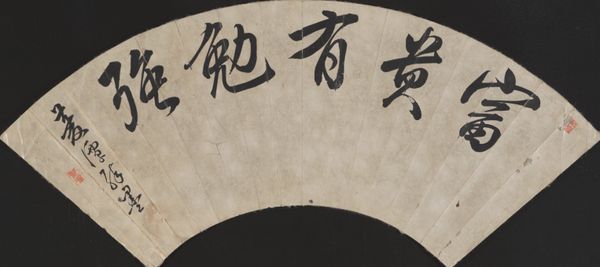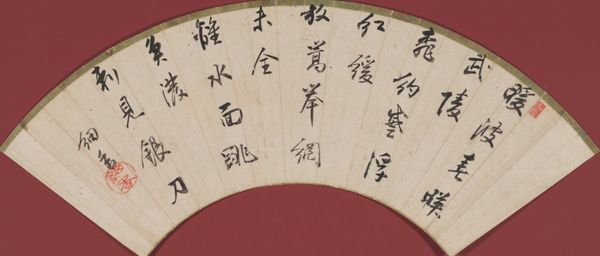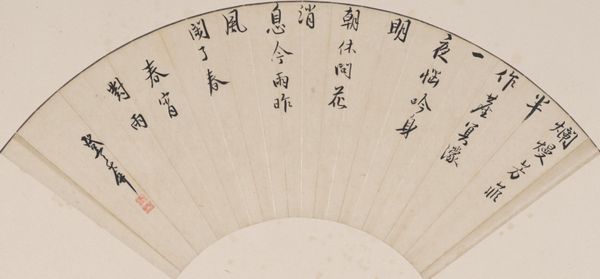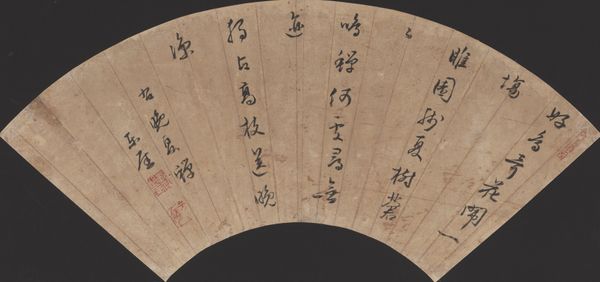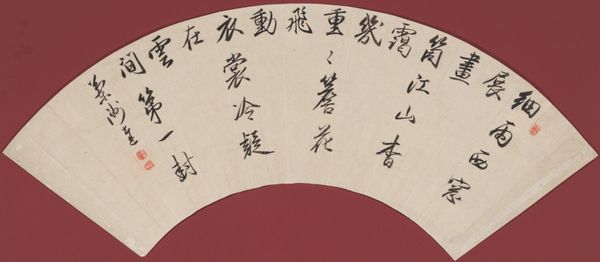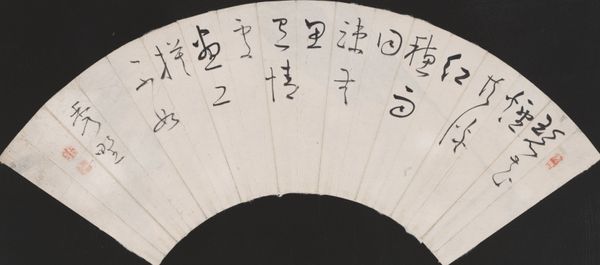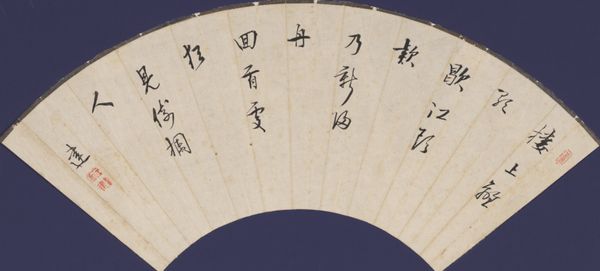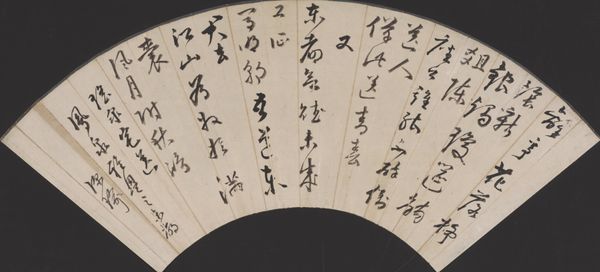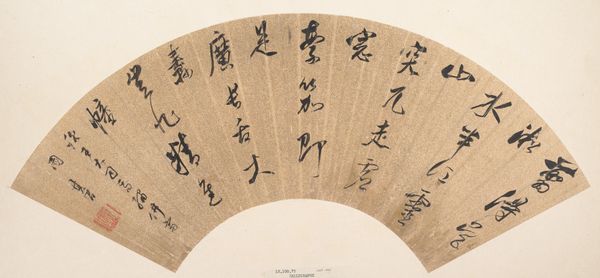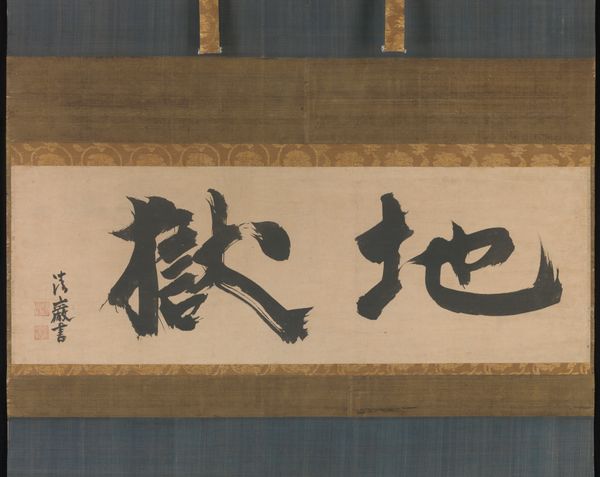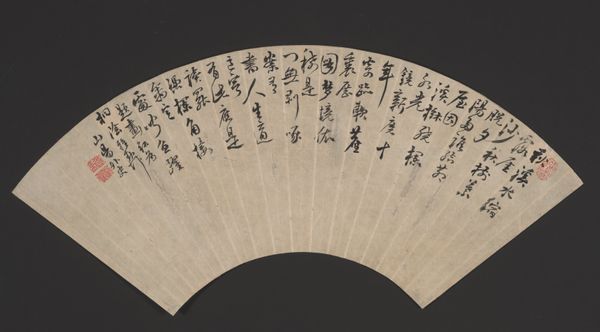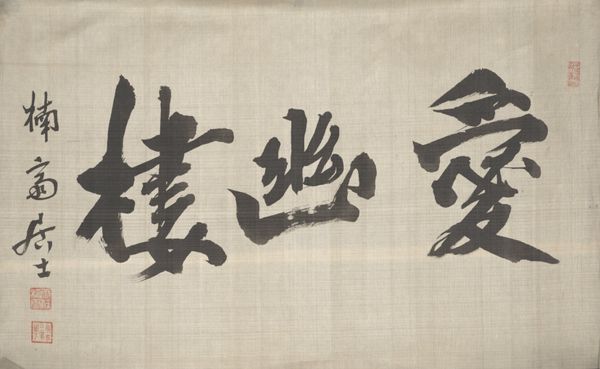
drawing, painting, textile, paper, ink
#
drawing
#
painting
#
sculpture
#
asian-art
#
textile
#
japan
#
paper
#
ink
#
historical font
#
calligraphy
Dimensions: 8 × 17 1/4 in. (20.32 × 43.82 cm) (sheet, fan)14 × 22 in. (35.56 × 55.88 cm) (mount)
Copyright: Public Domain
Editor: Here we have Kikuchi Gozan’s "Poem," from the mid-19th century, crafted with ink on paper. It’s interesting how the fan shape impacts the placement of the calligraphy. What are your initial thoughts when you look at it? Curator: Well, consider the material circumstances of its creation. This isn't just about expressing beautiful thoughts; it’s about the inherent value imbued in the raw materials—paper and ink. The labor required to produce and then master their use through calligraphic practice also informs the reading of this fan. Think of the socio-economic context: Who had access to these materials? How was the ink produced, and by whom? Editor: So, the value isn’t solely aesthetic but also tied to the production and the access to materials? Curator: Precisely. We also have to consider its function. It’s a fan – an object used by specific people for a specific reason – to keep cool! The act of displaying calligraphy upon it elevates the craft, forcing us to question the artificial distinction between ‘fine art’ and utilitarian objects. Notice, also, the implied movement of the fan influencing our perception of the brushstrokes; the hand of the calligrapher and the hand holding the fan almost become one. What happens when art is integrated so thoroughly into everyday life? Editor: That is a good point; by its integration into everyday life, one might engage with this art differently than how one does in a museum. Curator: Yes! The mode of consumption is an active component of this art. What more did this reveal about it? Editor: Viewing the piece through that material lens gives me a richer understanding of how class, labor, and daily use are embodied within it. It makes me see the paper not just as a background, but as something that took significant effort to produce and distribute. Thank you for highlighting that! Curator: My pleasure! Considering art through this framework is useful when questioning power dynamics related to creating and displaying.
Comments
No comments
Be the first to comment and join the conversation on the ultimate creative platform.
